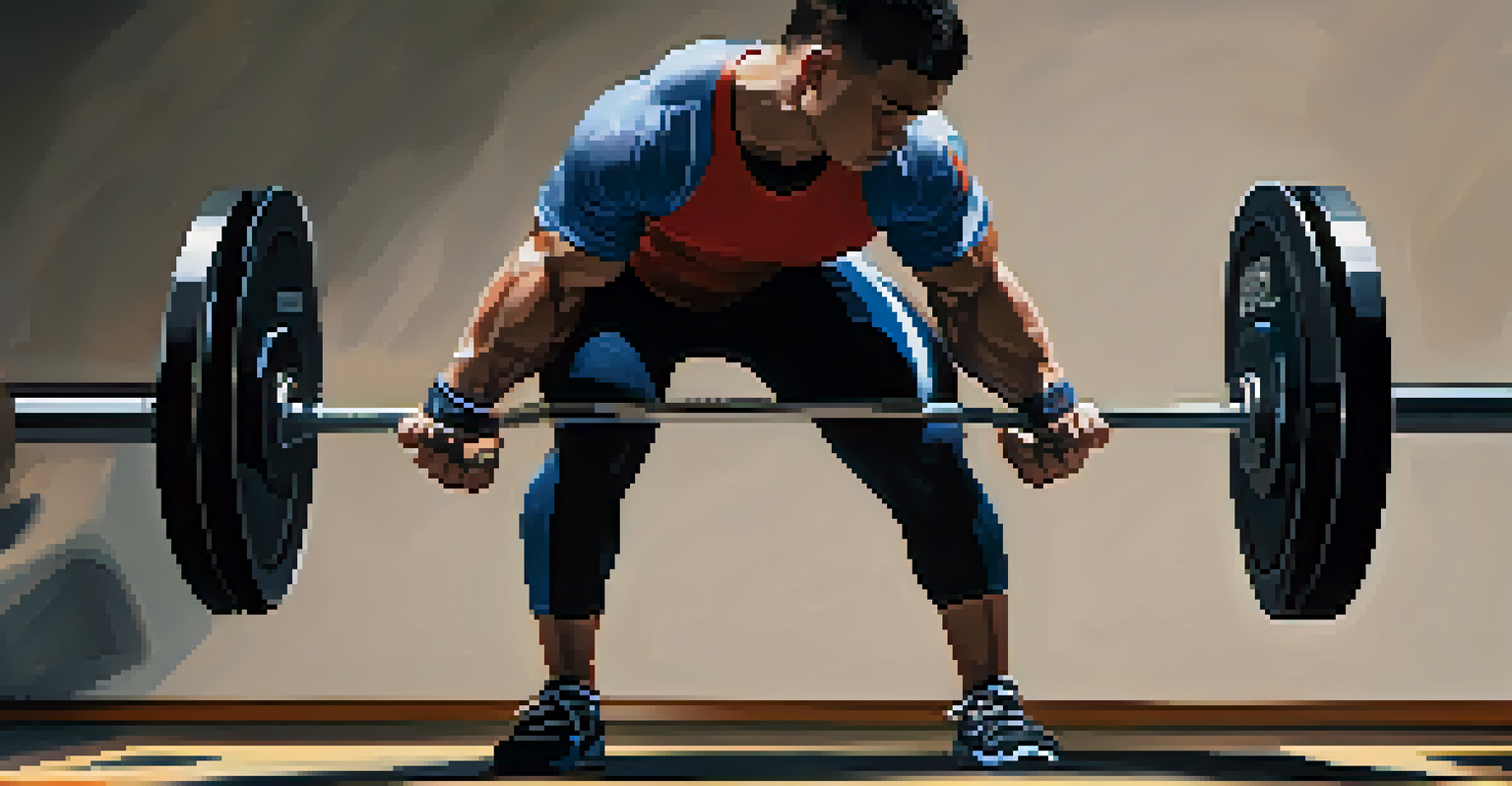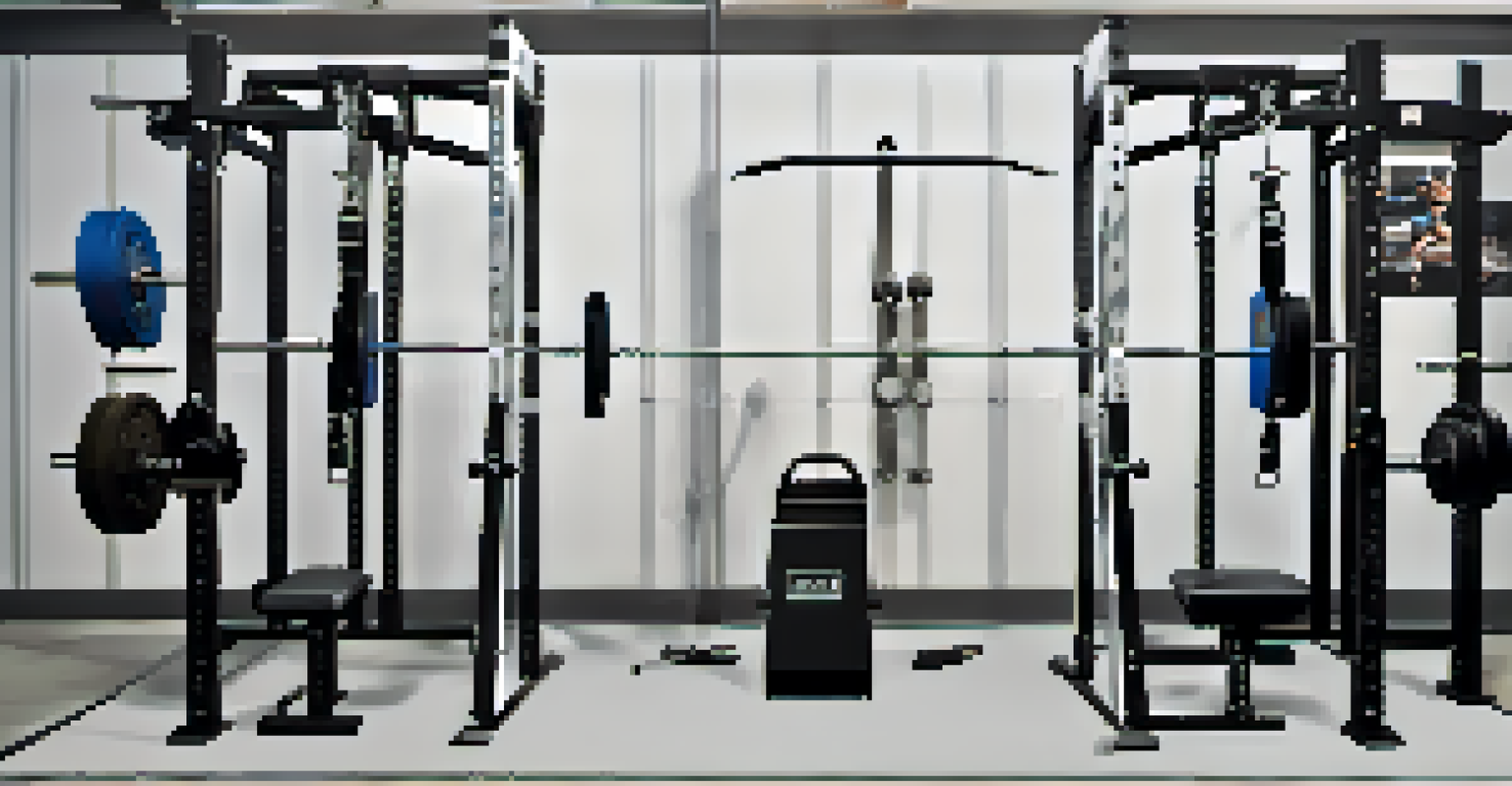The Rise of Technology in Powerlifting: Equipment Innovations

Understanding Powerlifting: A Brief Overview
Powerlifting is a strength sport that focuses on three main lifts: squat, bench press, and deadlift. Athletes compete to lift the maximum weight possible in these categories, showcasing their raw strength and technique. While powerlifting has deep roots in athletic history, its evolution has been significantly influenced by technological advancements.
Strength does not come from physical capacity. It comes from an indomitable will.
The sport's rise in popularity over recent years can be attributed, in part, to social media and the sharing of lifting techniques and achievements. This visibility has attracted newcomers, leading to a surge in both participation and competition. As more athletes enter the field, the demand for better performance and safety in lifting has become paramount.
This context sets the stage for exploring how technology is reshaping the equipment used in powerlifting today, from lifting belts to advanced footwear.
Innovative Lifting Equipment: The Game Changers
One of the most significant advancements in powerlifting has been the development of specialized lifting gear. Equipment like squat suits, bench shirts, and deadlift suits are designed to provide support and stability, enabling lifters to push their limits safely. These innovations have not only enhanced performance but also reduced the risk of injury during heavy lifts.

In addition to suits, other equipment such as lifting belts and knee sleeves have evolved. Modern belts, for instance, often feature innovative materials and design elements that provide superior support while maintaining comfort. This evolution allows athletes to focus on their lifts without being hindered by their gear.
Tech Revolutionizes Powerlifting Gear
Innovations in lifting equipment, such as specialized suits and smart gear, enhance athlete performance and safety.
Overall, these innovations have transformed the competitive landscape, allowing lifters to achieve personal bests and break records that were once thought unattainable.
The Role of Technology in Training Methods
Not only has equipment evolved, but training methodologies have also embraced technology. Lifters now have access to apps and software that track their progress, analyze performance, and even customize training regimens based on individual needs. This data-driven approach has empowered athletes to optimize their workouts and make informed decisions.
The future depends on what you do today.
For example, wearable technology, like fitness trackers and heart rate monitors, enables lifters to monitor their physical responses during training. These insights can inform strategies for recovery and injury prevention, allowing athletes to train smarter rather than just harder. This focus on data helps powerlifters fine-tune their techniques and ultimately enhance their overall performance.
With the integration of technology into training, athletes can cultivate a more scientific approach to their sport, leading to greater achievements on the platform.
Smart Equipment: The Future of Powerlifting Gear
Looking ahead, we are seeing the emergence of 'smart' powerlifting equipment. These are products equipped with sensors and connectivity features that provide real-time feedback during lifts. For instance, smart lifting belts can measure the amount of force applied during a squat or deadlift, providing valuable data to the lifter and their coach.
Such advancements not only improve performance but also enhance safety by alerting athletes when they are at risk of injury due to improper form or excessive load. Imagine receiving instant feedback during a lift, helping you correct your technique on the spot! This kind of innovation could revolutionize training and competition, making powerlifting more accessible and safer for everyone.
Data-Driven Training Enhances Performance
The integration of technology into training methods allows powerlifters to track progress and optimize their workouts.
As these technologies become more widely adopted, we can expect to see a new generation of lifters who leverage data to push the boundaries of what is possible in the sport.
Impact of Virtual Coaching on Powerlifting
The rise of online coaching platforms has also played a crucial role in the evolution of powerlifting. Coaches can now work with athletes from anywhere in the world, providing personalized training plans and guidance through video calls and messaging apps. This accessibility has democratized coaching and allowed more lifters to benefit from expert advice.
Additionally, many online coaches utilize video analysis tools to review lifting techniques, offering feedback that helps athletes improve their form and performance. This remote coaching model has been especially beneficial during times when in-person training is limited, such as during the COVID-19 pandemic.
Ultimately, virtual coaching has expanded the reach of quality training resources, enabling more athletes to find success in powerlifting, regardless of their location.
Safety First: How Technology Enhances Lifters' Safety
Safety has always been a cornerstone of powerlifting, and technology has significantly enhanced this aspect of the sport. Innovations like crash mats and lifting platforms designed to absorb impact have made training and competition environments safer for athletes. These tools not only protect lifters but also minimize the risk of injury to those around them.
Moreover, advanced spotting systems are now being developed, which can assist lifters during heavy lifts. Imagine a smart spotting mechanism that can detect when a lifter is struggling and provide immediate support. This kind of innovation could redefine how we approach safety in powerlifting, making it a more secure environment for all participants.
Virtual Coaching Expands Access
Online coaching platforms provide athletes worldwide with personalized training plans and expert feedback, democratizing access to quality coaching.
As technology continues to advance, the focus on safety will remain paramount, ensuring that athletes can pursue their passion with peace of mind.
The Community Perspective: Embracing Tech in Powerlifting
While technology has brought numerous advantages to powerlifting, the community's response has been mixed. Some purists argue that relying too heavily on equipment and technology detracts from the fundamental nature of the sport, which is based on raw strength and technique. They believe that the essence of powerlifting should remain grounded in the lifter's abilities, without the crutch of advanced gear.
On the other hand, many athletes and coaches embrace these innovations as tools that can enhance performance and safety. They argue that just as athletes used chalk to improve grip or lifting shoes for better stability, technology should be seen as an evolution rather than a replacement. The key is finding a balance that respects the sport's traditions while embracing the benefits of modern advancements.

This ongoing dialogue within the community reflects the dynamic nature of powerlifting, where tradition and innovation can coexist to create a more inclusive and effective sport.